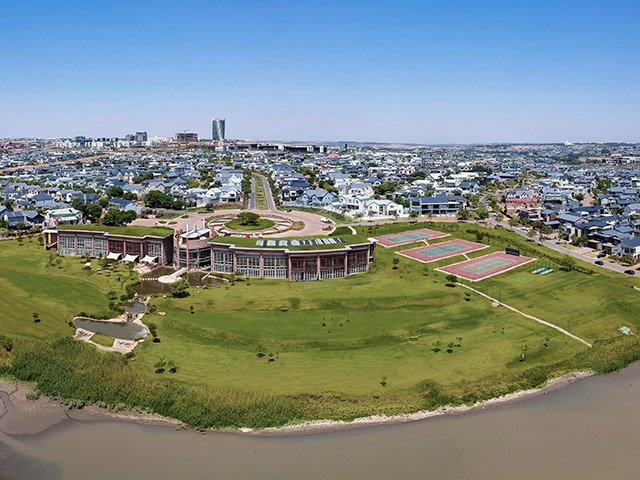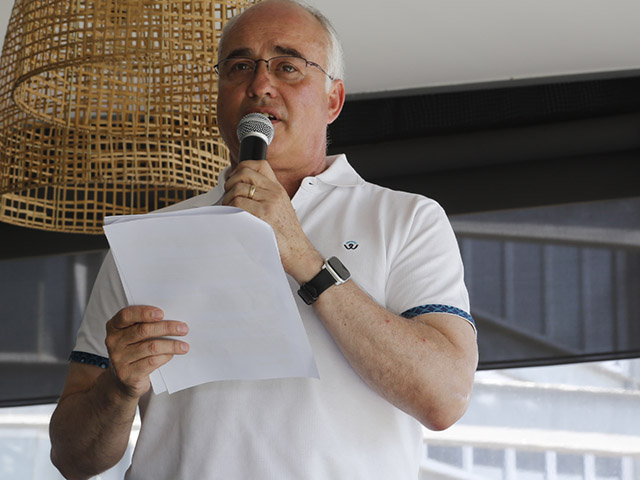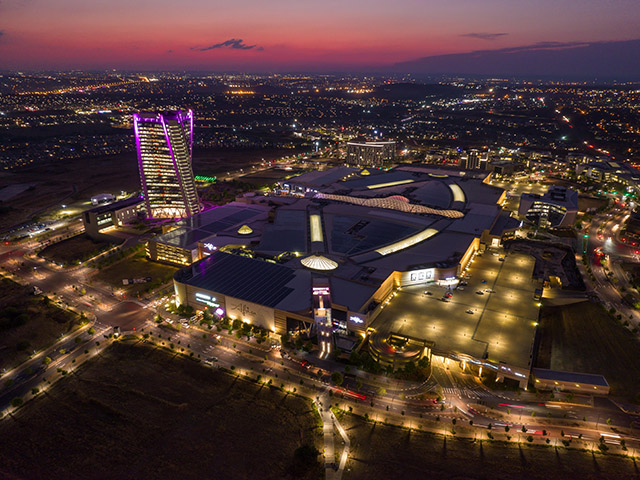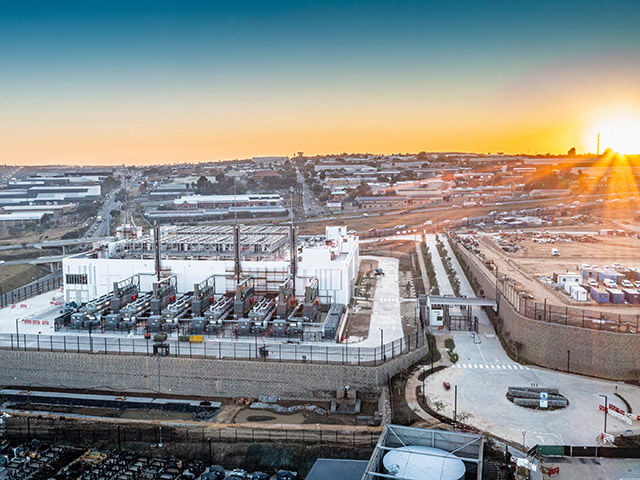Waterfall City: model for the future of South Africa’s smartest cities
By Ryan Noik 27 October 2022 | Categories: feature articles
Following a comprehensive tour of Waterfall City, Ryan Noik spoke to Willie Vos, the CEO of Waterfall Management Company, to find out how the newly branded area is using technology to become an advanced city for residents and businesses alike - and why if cities were Harry Potter characters, Waterfall City would likely be Hermione.
RN: Can you elaborate on how Waterfall City is incorporating Smart City elements – what technologies specifically are you using to enable it to function as a smart city?
WV: For most, a Smart City is a place where technology rules and Wi-Fi is free and fast. But peel back a city's layers of traffic, security, water, power, sustainability, waste management, etc. and you'll discover that a Smart City is made up of a few other things besides good Wi-Fi.
Waterfall City is a place where people can connect all aspects of their life, be it living, business or leisure. From a connectivity infrastructure aspect, Waterfall City delivers fibre optic and wireless telecommunication infrastructure that meets a global standard of uninterrupted, superfast communication, with foresight in planned urban development.
Waterfall Access Networks (WAN), a carrier-neutral Open Access Network (OAN), is tasked to manage the fibre optic and wireless networking across Waterfall City. This forms the foundation on which a smart city is built. Waterfall City is focused on delivering future-proofed infrastructure and management that allows for seamless integration of ICT that accommodates smart city plans and capacity growth for the Internet of Things (IoT).
WAN boasts a dedicated fibre optic cable link between Waterfall City and the Teraco Data Environments in Johannesburg. This means that Waterfall City is not reliant on other third parties for connectivity, and open accessibility is stretched to the extreme. Currently, there is 714km of installed duct infrastructure across Waterfall City and the network is fully redundant, so that in the unforeseen event of network disruption, traffic can be seamlessly diverted, resulting in limited to no down time when it comes to access.
In addition, there are 33 cell phone masts across Waterfall City, guaranteeing great reception. The Go Waterfall app, developed specifically for those living and working in Waterfall City, has become part of daily life in the city, creating a more tight-knit community. The Go Waterfall app is a dedicated Waterfall City smartphone application that offers a one-stop platform to access content, services and information about the development. The app was first launched in March 2018 and has since undergone several updates to bring residents and those working here more useful features.
On the commercial front, Waterfall City custom-builds premises to specific requirements, using cutting-edge architecture to integrate technology with efficient workspaces, resulting in some of the smartest buildings in the country.

Willie Vos
RN: Is there a roadmap for incorporating Internet of Things throughout the city to gather data? If so, how will that data be used – what kind of insights would be prioritised to increase efficiencies or enable Waterfall City to continue delivering on its core precepts?
WV: Data is a crucial part of the success of any smart city. IoT devices are key to this as the sensor data, transmitted safely and securely, can provide rich insights into making the environment a more efficient and safer one.
An example of how Waterfall City is incorporating IoT, is by using the low frequency Sigfox and Lora networks to read smart utility meters at residential developments, connect security alarms with movement sensors, and managing the temperature of geysers to avoid potential bursts. There are numerous applications for other white goods as well.
Other examples of how Waterfall City is leveraging IoT, and the data being gathered, is enabling residents and commercial tenants to summon Fire Ops – the city’s private firefighting service – to the site of an emergency, using their app. In addition, users of the Go Waterfall app can take a geotagged photograph of a pothole, a security risk, an accident, or the like, and submit it. Waterfall City management teams will get an alert and allocate resources accordingly to attend to the problem.
The future opportunities for the Go Waterfall app are virtually limitless and various plans are in place to make many more possible. Examples include showing citizens how many parking spots are available at any of the retail centres in Waterfall City or which routes in and out of the City are congested and the best times to travel. The app can also be used to pass on valuable information gathered by the local weather station. Another example is that the app could receive data from IoT sensors attached to pipes inside a home and detect a leak. In such an instance, it will automatically reach out to an accredited plumber who would come and examine the damage and repair it as required with no customer intervention necessary.
RN: At the event, the security aspect was addressed with numerous cameras deployed throughout the venues we toured. Was this modelled on other smart cities – like Singapore – or was this deployment customised to any specific local issues that Waterfall City wanted to address?
WV: Even though Waterfall City has taken inspiration from other smart cities from around the world, the entire security ecosystem was designed with local conditions and requirements in mind. Waterfall City’s integrated public security system includes access control at every residential estate, business park, logistics precinct and major retail centres, as well as a surveillance and reaction service supported by a state-of-the-art central management office.
Additional measures include 24-hour patrolled security and CCTV cameras throughout Waterfall City, and 134 surveillance cameras with number plate and facial recognition abilities. In the CBD, 400 cameras, panic buttons every 200m and street-lighting on back-up power in case of outages, ensure peace of mind for everyone.
The safety and security aspects involve more than just crime prevention; they include protecting infrastructure as well. As a practical example, attempts of cable theft and infrastructure sabotage have led to tactically orchestrated and well-choreographed operations by Waterfall City’s security operations. These operations not only thwarted several attempts but have incorporated standing security measures to additionally secure localised Eskom and City Power infrastructure that feeds into the area.
When incidents occur, thorough analysis and investigations are used to review security strategies and adapt security tactics in near real-time. Planning, leadership organisation, and control over all aspects is a permeating culture that constantly strives toward operational excellence and best practice.

RN: Can you speak a bit about how Waterfall City is dealing with the power issue – being a smart and modernised city, it seems like Waterfall City would be even more dependent on a stable and consistent power supply?
WV: Given global concerns around the lasting damage fossil fuels are causing to the planet, it has been imperative for Waterfall City to think creatively and leverage more sustainable resources as it moves towards a net-zero carbon footprint.
As such, Waterfall City has adopted a strong environmentally conscious approach to planning and development when it comes to energy. Given the greenfield nature of the development and how almost every building on Waterfall City is, in effect, a new build, it was an ideal opportunity to implement and encourage passive climatic design principles and introduce green innovation rather than trying to retrofit existing buildings later.
Many of the homes within Waterfall City are thermally efficient, where the City’s Architectural Guidelines encouraged lessees to build using solar geysers and panels, energy-efficient lighting, and low energy consumption fittings and appliances. Such homes are proven to promote both energy- and water-efficient usage, are more comfortable to live in, have long-term cost benefits and much higher resale values. Developments such as Waterfall Country Estate, Waterfall Country Village Estate, Waterfall Valley, and The Polofields also use piped LP gas as a highly effective alternative to traditional electricity.
Landscaping Guidelines encourage residential and commercial tenants to use water-wise indigenous plants, resulting in 40% water savings in some cases.
On the commercial side of Waterfall, green buildings are a key focus. To this end, the newly-completed Nexus 1 building was recently certified by the Green Building Council of South Africa (GBCSA) as Waterfall City’s first Net Zero Building. Its efficient design and solar power system ensure that there is enough renewable energy to meet the building’s needs, resulting in zero operational carbon emissions. To date, there are 27 green-rated buildings in the precinct. And it is not only new buildings that benefit from energy efficiencies but existing ones in the portfolio as well. One such example is Mall of Africa, which was retrofitted with solar in 2018, following its opening in 2016. Today, the mall boasts an extensive rooftop solar PV/diesel integrated plant, the largest of its kind in the world. The installation covers most of the available roof space, approximately 45 000m², and the energy generated is used to power part of the Mall’s daily operations.
Waterfall City has been in the fortunate position to have worked closely with Eskom since inception to have its electricity supplied directly by the provider, resulting in a substantial saving for users. The entire electricity grid within Waterfall City had been designed by our engineers and approved by Eskom. Once it was completed, ownership was transferred to Eskom to manage. As a key customer of Eskom, Waterfall City has an excellent relationship with the incumbent.
Further enhancing the energy environment is the fact that there are three sub-stations within Waterfall City dedicated to commercial users, two sub-stations for residential users, and another sub-station focused on Vantage Data Centers’ first-ever African campus within Waterfall City. In total, these six sub-stations see Eskom supplying Waterfall with 180MW (megawatts) of power.
The overhead electricity lines running from the Waterfall City sub-station, located off Allandale Road, into Megawatt Park are being upgraded. Due for completion at the end of the third quarter next year, this upgrade will not only benefit Waterfall City, but the surrounding community as well. The additional capacity supported by these upgraded cables will inject further efficiencies into the environment.

RN: Finally, how do you see technologies – such as cloud, Artificial Intelligence, data analytics – enabling Waterfall City to grow and thrive into the future, and do you have a plan to extend your usage of these technologies to this end?
WV: At Waterfall City, we employ our technology infrastructure to enable advanced data processing and system integration, with the goal of making our city management more efficient, our communities happier, our businesses more prosperous, and our environment more sustainable.
In terms of traffic management, we use artificial intelligence to manage certain smart traffic lights – this practice will eventually be rolled out to every traffic light in the precinct.
Thanks to the rapidly evolving technology environment with more advanced solutions continually becoming available, Waterfall City has just touched the tip of the iceberg of what is possible. We will always look for more innovative ways to harness technology like the cloud, IoT, data analytics, and AI to make Waterfall City more efficient and deliver the ultimate digital experience for its residents and the businesses operating from here.
Most Read Articles

Have Your Say
What new tech or developments are you most anticipating this year?



